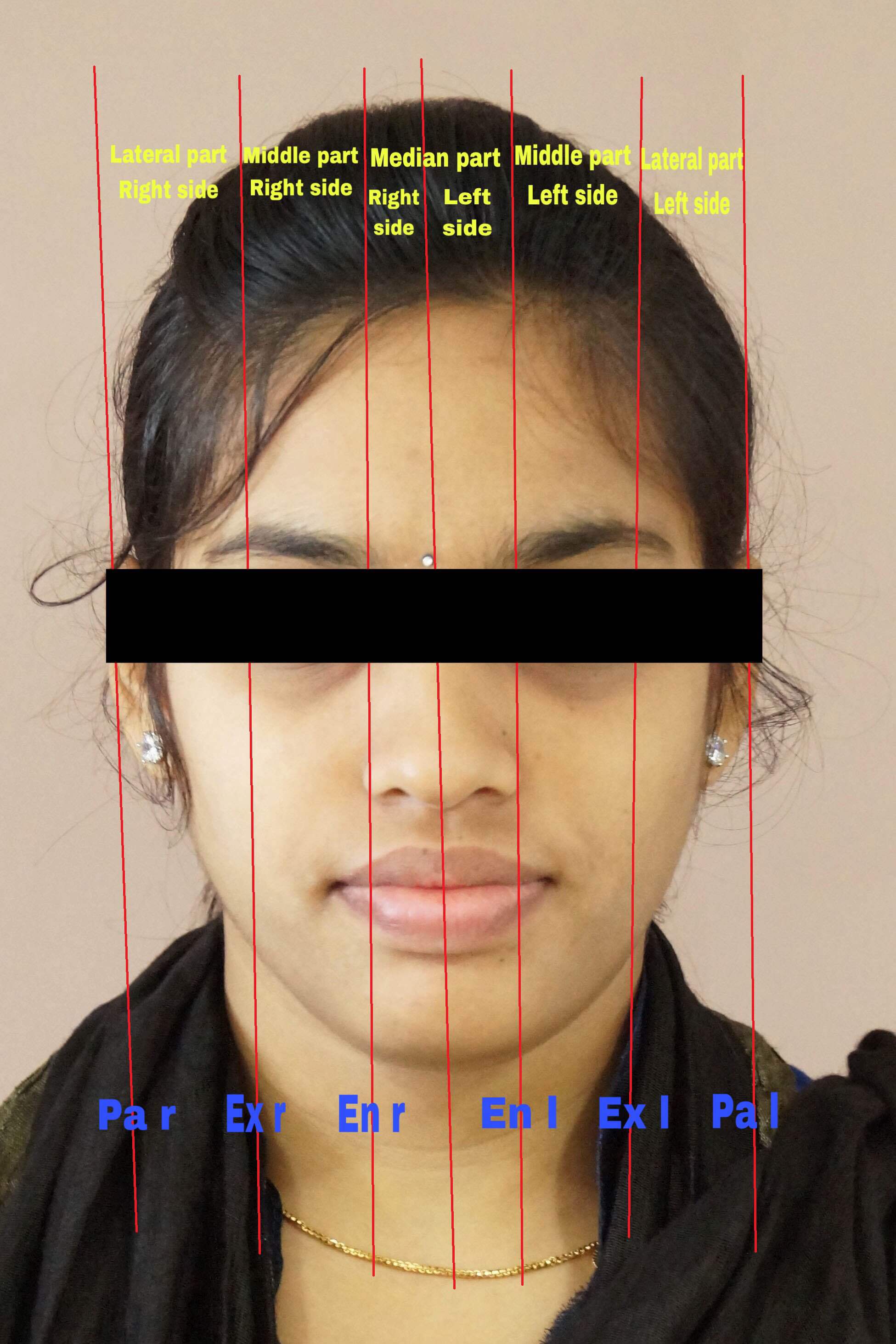IADR Abstract Archives
Assessment of Facial Asymmetry Using the Modified Rule of Fifth
Objectives: To evaluate the prevalence of facial asymmetry using the modified rule of fifth in patients reporting for orthodontic treatment and its correlation with different morphometric and skeletal malocclusions.
Methods: The study was performed on randomly selected 162 subjects reporting for orthodontic treatment within the age group of 14 to 26 years. Their growth patterns and malocclusions were determined with cephalometric values such as FMA, SNA, SNB, ANB.
Frontal view photographs in natural head position were taken using Sony alpha ST 58 digital camera under standardised conditions. The camera was placed at a distance of 90 cms and parallel to the floor, at the same level as the eye of the subject, fitted on a standard adjustable tripod. The digital photographs taken are transferred from the camera to the computer for analysis of facial asymmetry.
The rule of fifth, was modified by adding a midline to divide the face into two equal halves. The midline was constructed as a vertical line passing through glabella and subnasale. The following divisions were made on the photographs:
(1) postaurale- exocanthion (pa r-ex r) lateral Part,
(2) exocanthion- endocanthion (ex r-en r), middle Part,
(3) endocanthion- midline (en r-m) median part
The photographs were opened in software MWSNAP 3.0. The distances between the different parts were measured in pixels.
Results: 1. There is significant asymmetry in the lateral part of the face compared to median and middle parts.
2. There is significant facial asymmetry in patients with skeletal Class I and II malocclusion, and in average and horizontal growth patterns.
3. In class I malocclusion and horizontal growth pattern, there is significant asymmetry in lateral part.
4. Ironically, there is no significant facial asymmetry in patients with vertical growth patterns or skeletal class III malocclusion. The results could probably be because of the less sample size in Skeletal Class III malocclusion group and vertical growers.
Conclusions: Facial asymmetry was more concentrated on the lateral part when compared to the other two parts. Asymmetry is seen more in patients with Class II malocclusion, horizontal and average growth patterns when compared to other malocclusions and growth patterns. Further studies with more sample size has to be carried out to substantiate the results.
Methods: The study was performed on randomly selected 162 subjects reporting for orthodontic treatment within the age group of 14 to 26 years. Their growth patterns and malocclusions were determined with cephalometric values such as FMA, SNA, SNB, ANB.
Frontal view photographs in natural head position were taken using Sony alpha ST 58 digital camera under standardised conditions. The camera was placed at a distance of 90 cms and parallel to the floor, at the same level as the eye of the subject, fitted on a standard adjustable tripod. The digital photographs taken are transferred from the camera to the computer for analysis of facial asymmetry.
The rule of fifth, was modified by adding a midline to divide the face into two equal halves. The midline was constructed as a vertical line passing through glabella and subnasale. The following divisions were made on the photographs:
(1) postaurale- exocanthion (pa r-ex r) lateral Part,
(2) exocanthion- endocanthion (ex r-en r), middle Part,
(3) endocanthion- midline (en r-m) median part
The photographs were opened in software MWSNAP 3.0. The distances between the different parts were measured in pixels.
Results: 1. There is significant asymmetry in the lateral part of the face compared to median and middle parts.
2. There is significant facial asymmetry in patients with skeletal Class I and II malocclusion, and in average and horizontal growth patterns.
3. In class I malocclusion and horizontal growth pattern, there is significant asymmetry in lateral part.
4. Ironically, there is no significant facial asymmetry in patients with vertical growth patterns or skeletal class III malocclusion. The results could probably be because of the less sample size in Skeletal Class III malocclusion group and vertical growers.
Conclusions: Facial asymmetry was more concentrated on the lateral part when compared to the other two parts. Asymmetry is seen more in patients with Class II malocclusion, horizontal and average growth patterns when compared to other malocclusions and growth patterns. Further studies with more sample size has to be carried out to substantiate the results.

